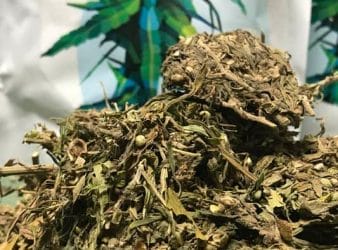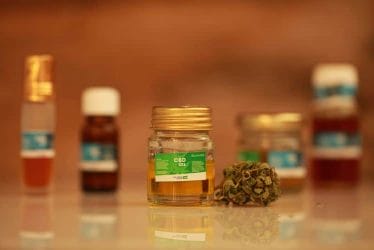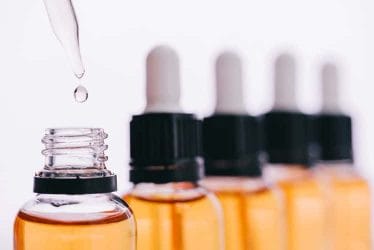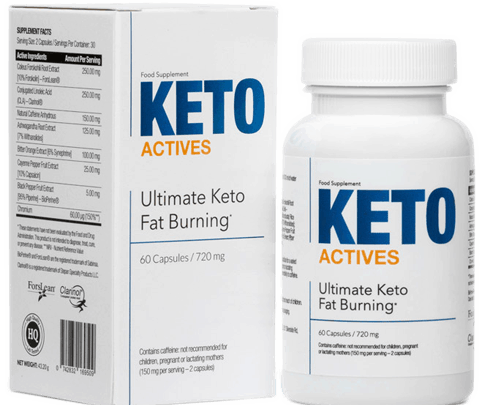
CBD oil – production and medical use of hemp oil
Despite constant progress, medicine still cannot cure many dangerous diseases in the traditional, conventional way. However, in situations where it turns out to be completely helpless, unconventional medicine can help, using novel, unfortunately not yet fully accepted methods in the process of treatment and patient’s convalescence. The CBD oil extracted from hemp seeds is one of the most controversial of these.
Contents
Hemp – a versatile plant known since ancient times
Hemp is the plant that sometimes causes such a stir when it is mistaken for the indica variety, which is actually used to produce the drug cannabis but in reality has absolutely nothing to do with it. Seed hemp (Cannabis sativa L.) is a popular plant belonging to the hemp family, which grows widely in many parts of the world, especially in Asia. The first information about human utilization of hemp dates back to ancient times, when it was used, among others, in China, while in Poland it was already known to our Proto-Slavic ancestors. They extracted oil from them, but not CBD, they were also an important addition to many dishes of those times. Hemp was also mentioned by Henryk Sienkiewicz in “Potop”, where Mr Zagłoba advised Hetman Czarnecki to take hempseed to improve his memory and to drink strong Hungarian wine in order for the oleum to reach his head faster.
Hemp has a distinctive appearance, easily distinguishing it from its illegal variety, banned for cultivation not only in our country, but practically in the whole EU. According to the regulations in force in this respect, the Act of 29th July 2005, in Poland it is allowed to grow hemp, otherwise known as fibre hemp, having in its composition no more than 0.20% of THC. Until recently the condition for starting such cultivation was concluding a contract with an entity authorized to purchase hemp in a given province, but currently this is no longer required. However, it is necessary to specify the purpose for which we will grow it.
Hemp looks like a bush which grows up to 2m high, with a branched stem covered in pungent-smelling hairs. The Indian variety is much shorter and more branched, rarely reaching 1 m in height. Differences can be seen in the leaves, too, with the seed variety having more leaves, longer, up to 10 cm long and more slender. The seed variety of cannabis is also almost completely devoid of THC (Tetrahydrocannabinol), a substance with psychoactive properties, prohibited by law for use in our country. The degradation of THC itself also negatively affects other constituents, including cannabinoids.
The most important nutrients included in fiber hemp:
- Omega – 3 and Omega – 6 unsaturated fatty acids, a natural boost for the heart and circulatory system;
- Dietary fiber to regulate digestive function and improve digestion;
- one of the most easily digestible varieties of protein, a building block for tissues, including muscle;
- vitamins: A, B (B1, B2, B3, B6), vitamin D, E and K;
- minerals: potassium, phosphorus, magnesium, calcium, sulphur, manganese, sodium, silicon, copper, boron, iodine, iron;
- 8 essential amino acids, which we need, but our body is not able to produce them on its own;
- cannabidiol, an organic chemical compound, the main component of CBD oil.
CBD – what it really is and how it is extracted

The most valuable from the medical point of view and, what we particularly emphasize, completely legal CBD, from which the oil is produced, is a chemical compound belonging to the group of cannabinoids, naturally occurring in the cannabis plant. Its most important feature is that it has no psychotic effect whatsoever and has absolutely no properties that could make it a drug. CBD is extracted by several methods, on a limited or industrial scale, and among the most common ways to extract it, it is worth mentioning:
1. extraction with olive oil
This is the safest and most ecological method, which does not use any dangerous chemicals, especially ethyl alcohol or butane, which will be described below. To make CBD, the cannabis plant needs to be heated to activate its active ingredients, then olive oil is added and heated for at least an hour at a temperature as high as 100 degrees C. The result is an oil with an CBD content which, unfortunately, is not very high, which is one of the major drawbacks of this method. Another is the relatively short shelf life of the resulting product, which must be stored in a refrigerator because of the oil content.
2. extraction with solvents, ethanol or butane
This uses low-percentage ethanol and butane, but here the disadvantages of the final product far outweigh its advantages. The extraction with ethanol does give relatively pure and edible CBD, but in its composition a large amount of chlorophyll is deposited, which fortunately evaporates during the drying process, and the CBD itself is characterized by a weaker effect. The use of butane, on the other hand, may introduce into the oil substances included in the solvent itself, usually with aggressive, irritating effects. In both cases, valuable cannabis components such as cannabinoids, flavonoids and terpenes can be destroyed. Substances such as petroleum ether or naphtha are sometimes used, but these can increase the level of THC, not CBD.
3. dry ice extraction
This method of extracting CBD can be done at home, which of course we strongly discourage due to strict legal regulations. All you have to do is put the fibrous cannabis seeds in ice and after a while, a large amount of resin will start to precipitate out of them. This is more efficient than using oil, for example, but the resulting product is of too poor a quality to be used for medicinal purposes.
4. extraction using CO2, giving the highest yield on an industrial scale
Extraction of CBD using carbon dioxide is widely used on an industrial scale, although this method is definitely not the cheapest due to the need for specialized, sophisticated equipment. For this purpose, compressed CO2 is used, which works in a similar way as the solvents described above, with the difference that it is frozen and compressed in the so-called supercritical state. The CBD oil obtained in this way can be called almost ideal, with the highest degree of purity, clear, transparent, without undesirable impurities such as chlorophyll, retaining fullness of its valuable health composition. It can be used without any risk of poisoning, but the final cost of obtaining it may prove uneconomical.
CBD oil – the most important active ingredient and health properties
We already know how to obtain the CBD oil, still treated in our country as a dietary supplement, not a drug, and as we can see, it is difficult to do it at home, and who can possibly do it is regulated by the Act of 29 July 2005 on counteracting drug addiction. Therefore, it is time to get acquainted with the composition of this substance and its properties, making it increasingly popular. The cannabis extract contains a number of ingredients that directly determine its properties, but the most important active ingredient is cannabidiol, or CBD itself, in quantities ranging from 1 to 10 percent .

It is characterized by its amber color and slightly astringent, bitter taste, which is why various essential oils are added to it, also natural and with many valuable health properties. You can get it not only in the form of a typical oil, it is also added to pills, patches, ointments or creams for lubrication and even chewing gum. The positive effects of CBD oil on the human body cannot be underestimated and are fully confirmed by studies conducted in reputable medical centers around the world. This allowed us to overcome many negative myths surrounding this substance, erroneously compared to marijuana, which it definitely is not, as well as the fact that it is an illegal substance. Therefore, we reiterate that such oil can be used completely legally and the list of ailments it is used to treat and prevent is really impressive and it is valued for, among other things:
- treating and alleviating the symptoms of degenerative diseases, as CBD oil has an extremely beneficial effect on protecting brain cells, helping to eliminate the effects of stroke, for example. Recent studies have also shown positive effects on patients with Alzheimer and Parkinson disease, but this use of CBD is still in the testing phase.
- properties to prevent the development of many dangerous cancers, and CBD helps to eliminate cancer cells by cutting off the energy supplied to them, it also increases their sensitivity to drugs and stops uncontrolled growth. Unfortunately, there is no official data on scientific research conducted for this purpose and therefore information on the oil’s anti-cancer effectiveness is usually based only on the accounts of people who were supposed to be helped by it;
- prevention and treatment of multiple sclerosis, primarily a significant reduction in pain associated with this disease, in situations where the usual pharmacological agents proved ineffective
- It has anti-inflammatory and analgesic properties, making use of our body’s sensitivity to cannabinoids, thus strengthening the immune system which is the most important protection against various infections. The analgesic effect of CBD oil, in turn, is based on muscle relaxation, and the spectrum of ailments it covers is extremely wide, ranging from toothaches to the most troublesome rheumatic pains, such as those caused by rheumatoid arthritis;
- assistance in the treatment of psychiatric disorders, with the most promising results obtained in relieving the symptoms of the most difficult to treat schizophrenia. The use of CBD showed high effectiveness in comparison to a group of patients treated with traditional drugs, and in contrast to them, patients did not experience any negative side effects;
- fight against stress, which is considered a disease of civilization, plaguing more and more people around the world. One of the effects of the oil is the increasing feeling of sleepiness, which on the one hand can be considered a side effect of its action, but on the other hand helps to fall asleep and thus fully relax. The benefit is therefore obvious, because at the same time CBD copes with another problem, namely insomnia;
- The treatment of drug-resistant epilepsy, which is manifested by a large number of seizures, reaching, in the most severe cases, even several hundred a day, and only oil containing a high concentration of the active agent can deal with this effectively;
- treatment of diabetes, but in this case the results are based only on animal studies, but the achieved high efficiency is a good sign for the future for patients looking for an effective treatment for this disease and maybe in time the CBD oil will join them;
- help with heart disease and cardiovascular disease by reducing antioxidant stress in the body and relaxing blood vessels, which facilitates proper blood flow. Studies have also shown that CBD is an effective protection against the possibility of heart attack or stroke, it also helps to regulate its rhythm and prevents clogged veins;
- effectiveness in the treatment of fibromiagli, a particularly troublesome syndrome causing severe pain in the locomotor system, and dyskinesia, i.e. a movement disorder manifested by so-called involuntary movements, occurring, for example, in Parkinson disease;
- removing the visible effects of acne, as the CBD oil, when rubbed on the skin, acts directly on the sebaceous glands, thus regulating sebum secretion and stopping excessive seborrhea, one of the most frequent causes of pimples and other blemishes on the face. Equally high treatment efficacy has been achieved in the case of psoriasis, another skin disease with difficult to treat symptoms.
CBD oil – recommended dosage and possible side effects

Of course, these are only some of the ailments for which you can successfully use CBD oil, a dietary supplement that is gaining recognition from more and more users and, in most cases, does not cause any side effects. The only side effects observed have occurred with long-term use of doses with the highest concentration and such patients have complained of increased blood pressure, dizziness or dry mouth. However, if the recommended use is followed, these occur extremely rarely, and the dosage of CBD varies from 100 mg to as much as 3 g per day, depending on which condition it will be used for and what troublesome symptoms it is supposed to relieve. Of course, the dosage is always adjusted individually to the body in question, the patient’s weight and other individual preferences verified by a specialist.



